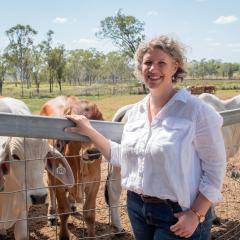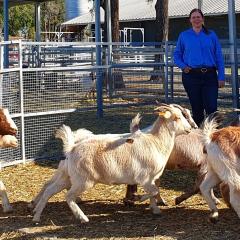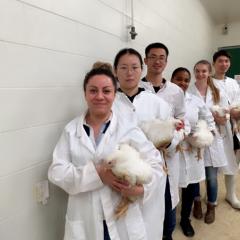Beef cattle production systems are a major contributor to Australian agricultural methane emissions. Dr Sarah Meale and PhD candidate Mariano Parra are evaluating feed additives to reduce methane emissions, and mechanisms to deliver the most promising additives to different cattle production systems.

Currently, Dr Meale is performing an extensive grazing beef cattle project, in collaboration with QASP, where an alternative mechanism to deliver an anti-methanogenic compound is being evaluated. The involvement of QASP staff has been fundamental for adequate cattle management. In addition, the experience of QASP staff is invaluable for animal husbandry procedures, and building expertise to monitor Green Feed mechanism units.
Issue
Enteric methane inhibition has two main limitations being: 1) the delivery mechanism of anti-methanogenic compounds and 2) methane reduction without affecting growth performance and rumen fermentation parameters. These aspects limit the potential capacity of additives to inhibit methane over time and more importantly their utilisation by Australian beef cattle producers.

Study
The main objective for this trial is to evaluate a highly effective anti-methanogenic additive on pasture. For this trial, 150 crossbreed heifers were randomly allocated into three treatments, where all heifers had ad libitum pasture and water access but receiving 2 kg/head/day of one of three treatment pellets via the GreenFeed. The study comprised of 2 weeks adaptation and 8 weeks of measurements. Measurements included animal growth performance, feed intake and methane emissions by the utilisation of Green Feeds.
Summary
This is the first experiment evaluating this anti-methanogenic additive in a beef cattle grazing system. Trial outcomes will validate the capacity to deliver this additive, using feed pellets, to inhibit methane emissions. It will also demonstrate that the utilisation of this additive might increase cattle performance when fed on pasture. With the support and experience of QASP staff, it was possible to minimize the impact of different challenges faced over the trial, increasing accuracy of methane and growth performance measurements.




